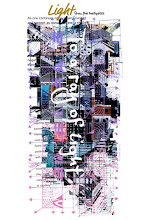Architects are also utilizing mycelium bricks for building walls. Given the original materials consist of sawdust and straw, they offer insulation properties. Hence, in regions where straw collection is challenging, stacking mycelium bricks between columns and beams in construction is feasible. Constructing a single-household in a Prout Village requires creating approximately 1000 mycelium bricks, each measuring 50cm in width, depth, and height, which necessitates a facility to dry them at 80 degrees Celsius for 45 minutes. It's conceivable to fire mycelium bricks alongside burning bamboo for charcoal batteries.
These mycelium bricks and leather can be produced from discarded materials like scraps from clothing, enabling the reuse of waste. When waste comes from natural sources, it contributes to sustainable materials that can be naturally returned to the environment.
In the absence of molds, they can also be created using a combination of a 3D printer. For instance, when crafting a chair, the outer framework is printed with a 3D printer, designed with numerous small holes and gaps. By filling these gaps with mycelium and sawdust and allowing time, the mycelium emerges from the holes, enveloping the entire structure, resulting in an interconnected assembly of mycelium both inside and outside. Heating this solidifies it for use.
A 3D printer, when using PLA filament made from starch sources like sugarcane, corn, or potatoes, can biodegrade in natural environments.
In Prout Village homes, residents use 3D printers to manufacture essential items from local resources, free of charge.
With a 3D printer, designers can directly transform 3D images drawn on a computer screen into three-dimensional objects. Hence, data designed by designers are shared online, allowing residents to select their preferred designs or create their own. The design rules for 3D printers and manufactured products are as follows:
- The primary priority for materials used in household items is to utilize raw materials accessible worldwide.
- Materials such as PLA filament made from starch or plant resources like bamboo, which can be naturally returned, stable, and renewable, are the top candidates for materials.
- Use reusable materials.
- Ensure no environmental pollution occurs.
- Avoid materials derived from animals, such as leather.
- Design products that can be produced by one 3D printer from another. This facilitates swift construction in other areas or speedy disaster recovery support for different regions.
Adhering to these rules, the manufacturing facility also undertakes repairing products and recycling discarded electronics as raw materials.







0 コメント